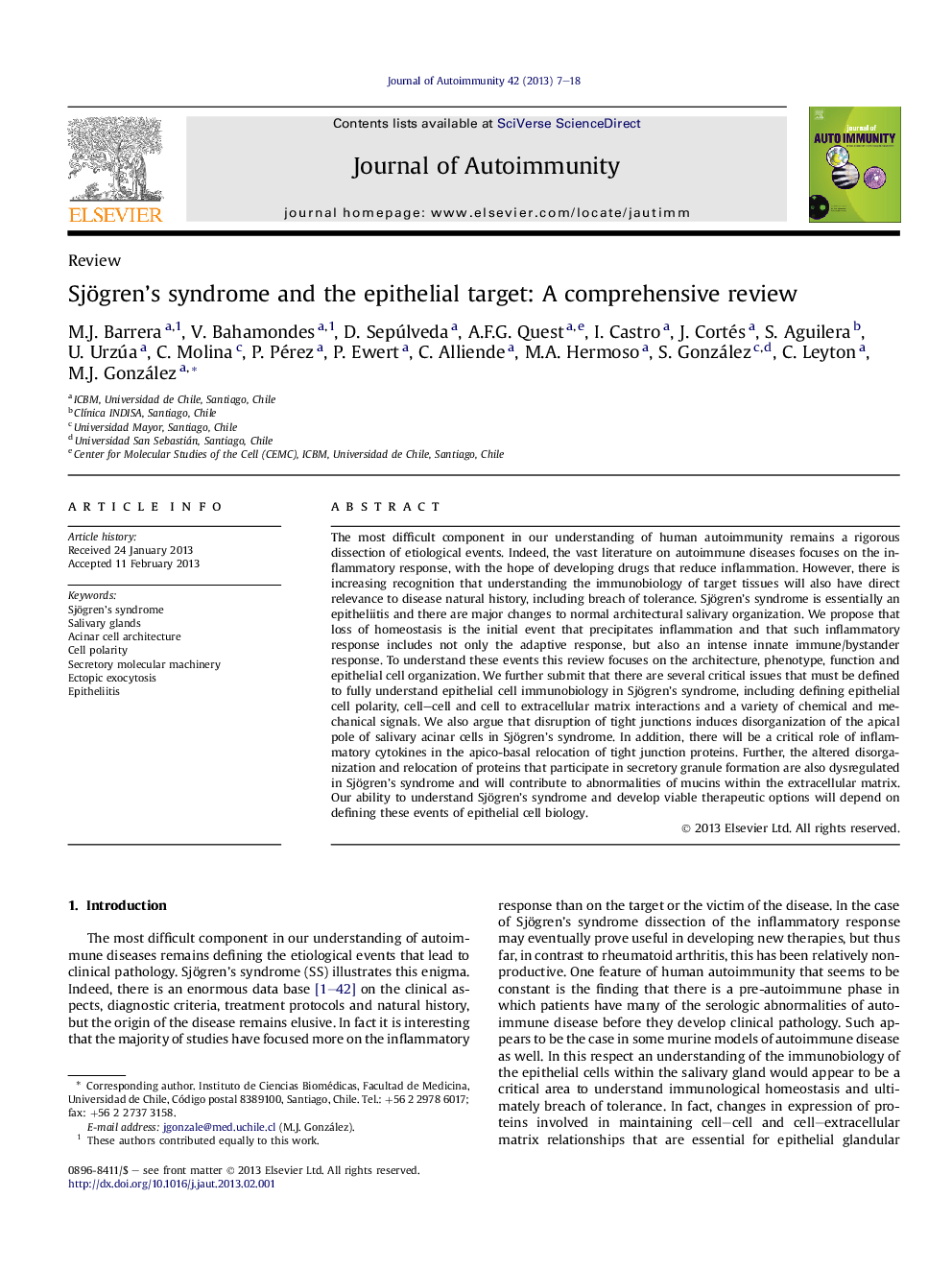| Article ID | Journal | Published Year | Pages | File Type |
|---|---|---|---|---|
| 3367877 | Journal of Autoimmunity | 2013 | 12 Pages |
The most difficult component in our understanding of human autoimmunity remains a rigorous dissection of etiological events. Indeed, the vast literature on autoimmune diseases focuses on the inflammatory response, with the hope of developing drugs that reduce inflammation. However, there is increasing recognition that understanding the immunobiology of target tissues will also have direct relevance to disease natural history, including breach of tolerance. Sjögren's syndrome is essentially an epitheliitis and there are major changes to normal architectural salivary organization. We propose that loss of homeostasis is the initial event that precipitates inflammation and that such inflammatory response includes not only the adaptive response, but also an intense innate immune/bystander response. To understand these events this review focuses on the architecture, phenotype, function and epithelial cell organization. We further submit that there are several critical issues that must be defined to fully understand epithelial cell immunobiology in Sjögren's syndrome, including defining epithelial cell polarity, cell–cell and cell to extracellular matrix interactions and a variety of chemical and mechanical signals. We also argue that disruption of tight junctions induces disorganization of the apical pole of salivary acinar cells in Sjögren's syndrome. In addition, there will be a critical role of inflammatory cytokines in the apico-basal relocation of tight junction proteins. Further, the altered disorganization and relocation of proteins that participate in secretory granule formation are also dysregulated in Sjögren's syndrome and will contribute to abnormalities of mucins within the extracellular matrix. Our ability to understand Sjögren's syndrome and develop viable therapeutic options will depend on defining these events of epithelial cell biology.
► The correct epithelia architecture is relevant to preserve cellular homeostasis. ► The loss of epithelial cell homeostasis induces immunity/autoimmunity alterations. ►The epithelial barriers disruption triggers chronic immune diseases. ► SNARE-proteins redistribution is observed in SS-patients salivary acinar cells. ► Ectopic exocytosis of mucins is detected in ECM of SS-patients salivary glands.
